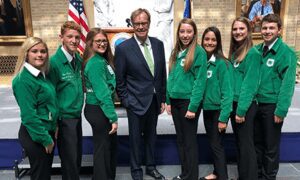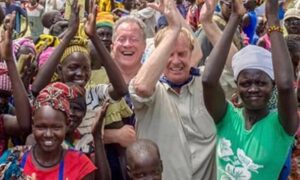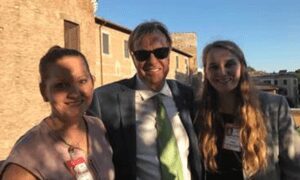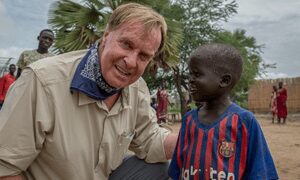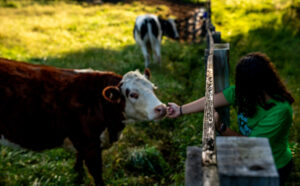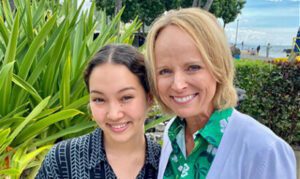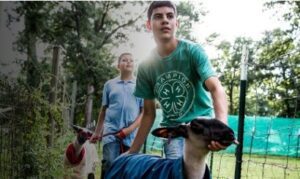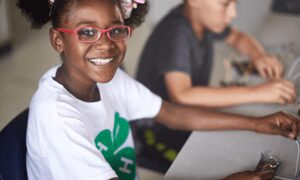In 1965, 10-year-old Kip Tom achieved a long-awaited dream of joining 4-H in a small rural community in northern Indiana. From that moment until 1974, a pathway began that would lead him to become a leader in agriculture. Today, he is Ambassador Kip Tom, United States Permanent Representative to the United Nations Agencies for Food and Agriculture.
Ambassador Tom credits much of his success and passion today to his nearly 10-year experience in 4-H.
I had the opportunity to connect with the 4-H alum and former National 4-H Council Trustee to hear more about his 4-H story, how that story shaped his career, and to learn more about his work to end world hunger.
Where did your 4-H experience begin?
Ambassador Kip Tom (KT): My 4-H experience started before I even got into 4-H. As a young child, about 5 or 6 years of age, our parents challenged us to get engaged and build a pathway. So when my siblings and I turned ten years old, we were ramped up and ready to go into 4-H. Before that, we were doing chores and getting paid a little weekly allowance for doing those chores. With that allowance, I bought my first calf for which I was responsible. That cow produced a calf for me every year for the ten years I was in 4-H. It made enough money for me to get started in the business I’m in today.
So I followed a very traditional 4-H path. I credit 4-H for setting the pathway, teaching me responsibility, for helping me understand business as an adult.
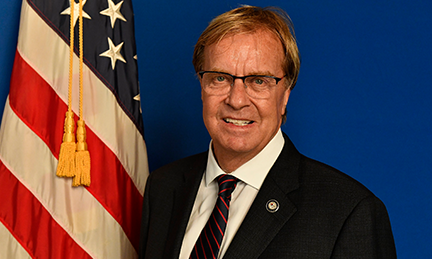
Can you describe the top skills or values you learned during your time in 4-H?
KT: There were five children in our family. We experienced the loss of our brother when he was 17, and honestly, 4-H prepared us to be able to deal with something like that. I can credit not only my parents, but also the leadership responsibility learned in 4-H. We also learned how to value others first, so we knew how to deal with a very dire situation like losing our brother. I think it was 4-H that taught us to care for other people and put other people first, ahead of our own interests. That helped us deal with the tragedy we went through in our family.
4-H also taught us how to be more engaged and take on more leadership roles in school and other activities. I would almost imagine that 80% of our community was involved in 4-H in some way. It made it a very dynamic community, which fostered many leaders who went on to contribute value today and into the future.
How did those skills lead you to where you are today, both personally and professionally?
KT: I believe that my growth in business was the result of my experience in 4-H. No matter what activity we participated in, there was a business element. I had some projects as a senior in high school that allowed me to make more than some of my teachers at school. It was the foundation of a 4-H experience—which started at 5 or 6 years of age—that gave me the footing to grow a business today. Now, that business has grown to have agriculture operations in Indiana and Argentina, as well as investments in ag start-ups in San Francisco.
Please share your thoughts on the evolution of 4-H and how you think the organization is preparing today’s young people to be leaders in their communities.
KT: I think that evolution has been in place for some time as we’ve seen 4-H evolve and expand, offering opportunities for more young people in rural and urban communities. Let’s face it, we’ve had a lot of growth in urban areas as far as population goes, and we’ve seen rural populations decline. So the trend has been pretty well paralleled. When I served as a Trustee for National 4‑H Council, I learned about projects that represent that evolution. We visited an aquaculture farm that a group of 4-H’ers was running in downtown New York. That was exciting for me! In the rural areas we visited, I’ve seen a protein packing plant. These 4-H’ers are contributing and building a successful future. They give back to the community, and at the same time, they improve their own economic future while helping others to do the same.
Well before accepting your current role as U.S. Ambassador to the UN Agencies in Rome, you played a significant role in agribusiness and economics, from serving on international boards to overseeing production at Tom Farms. Tell me about the defining moment in your career in agriculture in which foreign affairs became a key focus?
KT: Throughout my career, I’ve been on several boards and involved in philanthropic efforts, trying to assess why we have so many people hungry around the world when agricultural productivity is so high in the United States. I got involved with an organization called Farmers Feeding the World, and along that way, I met Howard Buffett. Together, we visited Afghanistan and Iraq, where we witnessed firsthand how people are struggling to feed themselves. At the same time, one of my fondest memories is as a member of National 4-H Council’s Board of Trustees. We went to Kenya and Tanzania, where we saw some of the 4-H clubs operating down there. While in Kenya, we met Millicent Obare, principal of Nyaminia Primary School. I think she had nearly 900 students at the school, and those kids were so excited about their 4-H experience. They were eager to learn how to grow a livelihood and at the same time give back to the community. All of this set the stage for where I am today.
You have often spoken out about the crisis on hunger that is plaguing countries around the world, once saying, “too many people go to bed hungry…and our world pays the consequences because of that.” Tell me about some of your work to date on combatting this issue and how can young people help support the mission to end world hunger.
KT: The Food and Agriculture Organization recently released its SOFI 2019 report, The State of Food Security and Nutrition in the World, which cited that the number of people who are chronically malnourished and on the edge of starvation and famine grew from 810 million a year ago to 827 million this year. Those numbers continue to increase, with no anticipated change in the near future. It’s very concerning. So, in the role I’m in today, I represent the U.S. out of Rome and the way we work with the World Food Program (WFP), the International Fund for Agricultural Development (IFAD), and the Food and Agriculture Organization (FAO). These UN Agencies go out and work with those who have the immediate need and are facing hunger. Human conflicts drive hunger in many of these places, and we sometimes find out much of this conflict is driven by not having access to food, and people migrate, and we have long, drawn out, damaging conflicts. And then we have an even greater crisis in feeding people. I work a lot with the FAO, an organization with a mandate to go out and create resilience and capacity in food systems to feed people. It’s a big mission, one with a broad mandate, and it’s essential. I can tell you, I didn’t leave five children, 11 grandchildren, and two 90-year-old parents to come here and not get anything accomplished. I’m here to get work done.
What are some ways 4-H and other youth organizations can keep youth more informed about these topics?
KT: I think we need to talk about it in 4-H clubs. We can talk about just how great the need is on a global scale. Think about it this way. Africa will double its population by 2050. How are we going to feed them? We can barely feed them today. I think that puts it in a clear perspective of just how great that need is. The capacity is going to be needed to feed the world. The demand for food is going to continue to grow, and there are so many places for young people to be involved. Along with agriculture, STEM programs allow us to innovate and think about new ways to feed a hungry world.
What message would you share with young people to encourage them to want to help feed their community and world?
KT: Realize that we don’t live in a static world. We need to understand our past, but we also need to look to the future. Realize that there will be so many careers available and jobs created in the next ten years. Have an open mind. Understand the global perspective, because as we continue to live in a more global society, there’s a need for youth to be very adept at changing. Be very aware of those around the world. Be very broad in your academic choices as you go through high school or college. Make sure you leave yourself open to dream a little bit. Our access to technology does not limit our ability to innovate. It’s only limited by our ability to dream.
Lastly, I leave you with this final statement: “I am only one, but I am one. I can’t do everything, but I can do something. And something I ought to do.” My father repeated it to me many times as a child, and that’s why I remember it. I use that as a challenge to young people as they look at the complexity of the world today and how it may seem too big of an obstacle to overcome. It’s a statement that’s very close to my heart, and I challenge everybody to get involved and be a part of the solution.









